Important Facts about Breastfeeding
Human Milk is the ideal source of nutrients and energy developed by evolution, which meets all the requirements of newborns and infants, guaranteeing their proper growth and development and strengthening their immune system.
Newborns who are breastfed receive all the nutrients, vitamins and minerals necessary for their immediate and subsequent development. According to UNICEF, these infants are six times more likely to survive due to the antibodies contained in milk, which protect against diseases such as diarrhea and pneumonia, considered among the main causes of infant mortality.
The World Health Organization and the Pan American Health Organization point out that, in the long term, those who were breastfed have the following benefits:
- Are less overweight and experience less obesity
- Less prone to type 2 diabetes
- On average, they have an IQ six points higher than those breastfed for less than one month*.
- Adequate growth and development
- Protection against viruses, bacteria and common respiratory tract infections, as well as other diseases such as celiac disease, childhood cancer, sudden infant death syndrome, among other problems.
The practice of breastfeeding also has health benefits for women:
- Its initiation, shortly after delivery, helps the uterus return to its original size faster, aiding in the prevention of postpartum hemorrhage.
- Helps to lose the weight gained during pregnancy.
- It is a protective factor against osteoporosis, breast and ovarian cancer.
- It is a natural method of contraception
- Promotes a loving relationship and bond between mother and baby.
According to INEGI 2014 data:
- 91.4% of infants born between 2009 and 2014 were breastfed, but only 11% were exclusively breastfed for the first 6 months of life.
- 33.4% of women who did not breastfeed their babies indicated that they did not have enough milk. MYTH!
- The average duration of breastfeeding nationwide is 8.8 months, and here in Quintana Roo 8.4 months.
What does breast milk contain?
Breast milk is a living fluid, the result of millions of years of evolution, and naturally designed by your body to fit your baby.
It is composed of proteins, non-protein nitrogenous components, lipids, oligosaccharides, vitamins and minerals. In addition, it contains hormones (mainly maternal), enzymes, growth factors and many types of protective agents.
Breast milk is not the same throughout the time you breastfeed: its formula, volume and components are adapted according to your baby's growth.
Broadly speaking, there are 4 different types of milk:
Pre-Calostrum
It begins to be generated during the last trimester of gestation, in preparation for the birth of the baby. It contains immunoglobulins, lactose and sodium among other things.
Calostrum
It is produced from day 1 of your baby's birth until 4 days after, it is not produced in large quantities, but it usually has a high concentration and density, in order to cover the baby's requirements.
In relation to mature milk, it has a lower energy content, but a higher content of proteins, minerals and immunoglobulins, with the intention of nourishing and protecting the newborn baby, favoring the development of its immune system.
There is not a large production, and it may even appear only as drops, this is precisely designed so that the baby's kidneys are not overloaded with a large amount of liquid, in addition to favoring the expulsion of meconium (the baby's first feces of all the amniotic fluid that he could swallow during pregnancy, and which is characterized by being dark-green in color).
It is an easily digestible milk, for an immature digestive system, in addition to favoring the colonization of the intestine with lactobacilli.
Transition Milk.
It occurs from 4 to 15 days after the baby is born, with an increase in volume noted on day 5 as colostrum production ends. The increase continues until it reaches approximately 700 ml per day.
Mature milk.
Approximately one month after the baby is born, breastfeeding is considered to be well established and, following free demand, milk reaches its mature level. A volume of 700-900 ml per day is produced.
Fats, proteins and carbohydrates are easily digested and absorbed, so that the use of nutrients is ensured, with the objective of forming a strong immune system, guaranteeing the health of the child during its first stage.
During the breastfeeding period, the milk will vary in nutritional composition to provide what the baby/child requires according to what they're is going through (for example, if the baby has an infection, it is very common that breast milk adapts its composition to support the child's system to fight off infection).
In any of its 4 stages, we speak of human milk as having, broadly speaking, the following characteristics:
- Antibodies against disease
- Hormones that regulate appetite, sleep patterns, and establish emotional bonds
- Cytoblasts that aid in organ development and healing
- Beneficial bacteria for the digestive system
- Prebiotics for the operation of the small intestine
- Fatty acids for brain, nervous system and eye development
Human milk has also proven to greatly support certain disorders and ailments, such as acute diarrhea or dehydration.
In addition, because of the bond, it forges with the mother, breastfeeding provides great emotional support in stressful situations, such as injections, childhood illnesses, etc. Due to the great benefits of its adaptable composition, breastfeeding is rarely indicated to be discontinued, but on the contrary.
The WHO and UNICEF recommend that breastfeeding should be established exclusively during the first 6 months of life and continued at least until the first 2 years of life.
* According to a review of 17 observational studies, optimal breastfeeding has beneficial effects on IQ tests.

